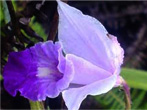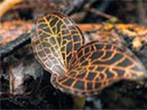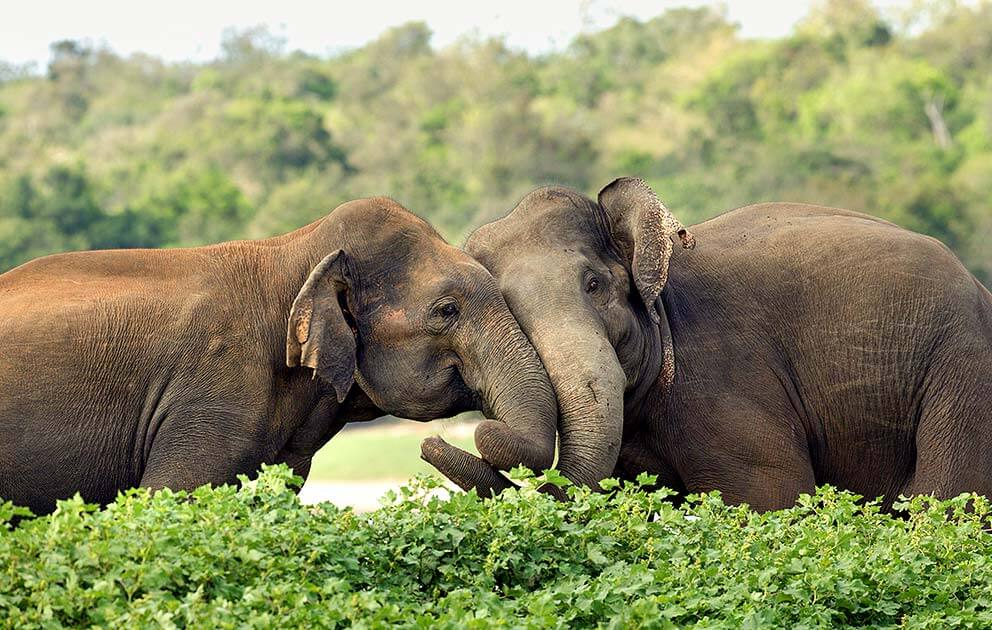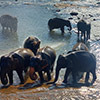
Sinharaja forest reserve is one of the least disturbed and biologically unique lowland rain forest in Sri lanka. This forest covers an extent of about 11187 hectares from east to west .The length of the forest is about 21km and width from North to South is about 3.7km.It was declared a Man and Biosphere Reserve (MAB) in 1978,as representative of tropical humid evergreen forest Eco system in Sri Lanka and has been recognized by UNESCO as part of it’s International Network of Biosphere reserves. It was declared a National wilderness area in 1988 and lately a world heritage site in 1989.It is situated in the southwest lowland wet zone of the country in the districts of Ratnapura, Galle and Matara. The average annual temperature of Sinharaja is 23.6 C. Annual rainfall is more than 2500mm.The rain fall is well distributed during two monsoons, May to July and October to December.
The vegetation of Sinharaja may be described either as a tropical lowland rain forest or tropical wet evergreen forest.some striking characteristics of the forest are the loftiness of the dominant trees, the straightness of their bole, the abundance of regeneration and the diversity of species. Average height of the trees varies between 35m – 40m.some individuals rise even upto 50m.The vegetation of Sinharaja is that of humid wet evergreen forest type with a high degree of endemism. In fact some families such as Dipterocarpaceae show an endemism more than 90%. The untapped genetic potential of Sinharaja flora is enormous.
Out of the 211 woody trees and lianas so far identified within the reserve 139 (66%) are endemic. Similarly, high levels of endemism are perhaps true for the lower plants like ferns, epiphyts as well.out of 25 general endemic to Sri Lanka 13 are represent in Sinharaja. The Total vegetation density, including trees, shrubs, herbs and seedlings has been estimated to be around 240,000 individuals per hectare, of which 95% comprise individuals of the ground layer bellow 1m in height.The density of trees, lianas above 30 cm girth at breast height, ranges between 600 – 700 individuals per hectare while the number of merchantable individuals of trees of girth grater than 150cm ranges between 45-55 individuals per hectare.
 |
 |
 |
 |
 |
 |
 |
 |
 |
| The vegetation of Sinharaja may | The vegetation of Sinharaja may be described lowland rain | The vegetation of Sinharaja may be described either as a tropical lowland rain | The vegetation of Sinharaja may be described either as a tropical | The vegetation of Sinharaja may be described either as tropical lowland rain |
 |
 |
 |
 |
|
| Title 01 | Title 02 | Title 03 | Title 04 | Title 05 |
Types of Vegetation | Vegetation Structure | Rare Species | The Endemic Flora | Forest Regeneration | Current Research
Fauna of Sinharaja
Studies on the fauna of Sinharaja have revealed that there is a high degree of endemism among the butterflies, fish, amphibians, reptiles, birds and mammals are greater than 50%. There have been reports of sightings of a few animals in the eastern Secter.The most common deer species is the Sambhur The Monk deer and Barking deer are also found within the reserve. Leopards are very seldom sighted, but their frequent presence has been confirmed by tracks and other signs. Badger Mongoose and the Golden Palm Civet have been occasionally sighted. The most commonly seen primate is the Purple - faced Leaf Monkey.Although the elephants said to be common in the past, there have not been reports of sightings during the last 15 years.
Out of the Birds recorded in the western sector of the reserve, 72% were resident non-endemic and 13% migrants. One of the most interesting and colorful spectacles to be found in the in the Sinharaja is the presence of mixed species of foraging bird flocks, a phenomenon commonly found in rain forests total of 100 such flocks were systematically observed, and studies have revealed that some flocks contained 48 species including 12 endemic species. The rare endemic birds to be seen in Sinharaja are the Red-faced Malkoha, the Sri Lanka Blue Magpie, the Ashy-headed Barbbler, and the White - headed Starling and the Green – billed Coucal the rarest of Sri Lankan birds. The Agamids are the best represented group of reptiles, the most common being the Green Garden Lizard. Of Special significance are the sightings of Calotes Liolepis an arboreal species, the rearest of all agamids found in the island .The only Tortoise recorded in the reserve is the Hard - shelled Terrapin, while of the species of skinks, the spotted skink can be seen often. Among the snakes The Green Pit Viper and Hump-nosed Viper are commonly found in this forest and are endemic to Sri Lanka.
The amphibians are fairly well represented in the reserve and nine endemic species have been identified. The endemic Torrent toad and the common house toad. In most streams and marshes, the Wrinkled frog and The Sri Lankan Reed frog is also found in Sinharaja. Ramanella palmata a rare endemic species is the only microhylid recorded so far while the yellow-banded Caecilian is the only apodan recorded.
It is desirable that you, who visit the forest, be sensitive to the need to conserve forests such as Sinharaja.Contray to the chaos and congestion prevailing in urban areas, it is in forests that the quality of life is best expressed. In addition man finds peace and tranquillity in forest.
Allow yourself sufficient time to roam about within this nature’s green cathedral and enjoy its beauty and majesty whether you be a photographer, artist, scientist or a nature lover. “Please leave it as you find it” is our humble request…
Birds Reptiles Amphibians Fish Invertebrates
| Mammals | ||||||
|---|---|---|---|---|---|---|
 Myths and Legends
Myths and Legends
The links between the Sinharaja Forest and the Sinhala peoples of

 The Twentieth Century
The Twentieth Century
Thus by the dawn of the twentieth century the first step towards conserving at least...

 Records in History
Records in History
Proper documentation of the area begins with the Portuguese..

 The Recent Past
The Recent Past
For the next two decades, the Sinharaja was to lie largely ignored by scientists...

 Location and Boundaries
Location and Boundaries
The links between the Sinharaja Forest and the Sinhala peoples of

 Topography and Drainage
Topography and Drainage
Thus by the dawn of the twentieth century the first step towards conserving at least...

 Climage
Climage
Proper documentation of the area begins with the Portuguese..

 Geology
Geology
For the next two decades, the Sinharaja was to lie largely ignored by scientists...

 Soils and Soil Microflora
Soils and Soil Microflora
For the next two decades, the Sinharaja was to lie largely ignored by scientists...

???????
Sinharaja